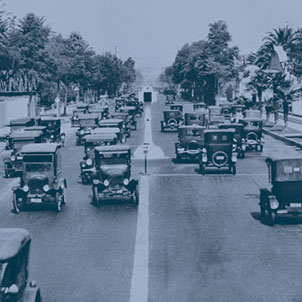The autonomous vehicle with all its Google-esque lustre (no need to concentrate on driving; the eradication of fatalities; and lower cost fuel consumption) has been hailed as the inevitable evolution of transportation mobility. Fast forward ten years, and we will whip out our smart phones and book an autonomous ride to work from our doorstep.
But although autonomous vehicles are set to revolutionise the way we travel – the article “The Big Shift Last Time: From Horse Dung to Car Smog” cautions that “The rise and fall of the horse makes very clear the difficult and troubling character,” of transitions.
When it comes to mobility, is there really a fast track to progress?
Would you catch an autonomous vehicle to work?
Not a smooth path
By 1890, a New Yorker took over 290 horse-car rides a year, but as we reached ‘peak horse’, so too did the variety of social ills these beasts created, i.e. inordinate amounts of manure a day. As a result, the automobile was hailed as the saviour, which would result in cleaner streets, reduce congestion and restore order to the chaos of city streets.
In reality, however, the demise of the horse was, as the author puts it, “a protracted drama that took…the messy adoption of three fossil-fuel technologies. Steam engines replaced the horse for long-distance haulage (travel); coal-fired electricity made the horse redundant for public transit, and the combustion engine eradicated the horse as a prime mover of individuals and most goods.”
In today’s terms, although the transition will be more rapid, getting from a point in time where all vehicles are driven by humans, to a point in time where all vehicles are automated, given the scale and size of our cities today, is set to be far more complicated than the horse to car transition.
Are we ready?
 Legally, the advent of the car saw the introduction of various acts in countries around the world (also known as the Red Flag Laws). These acts required all self-propelled vehicles to be led by a pedestrian waving a red flag to warn bystanders of the vehicle's approach and assist horse-drawn carriages to pass safely.
Legally, the advent of the car saw the introduction of various acts in countries around the world (also known as the Red Flag Laws). These acts required all self-propelled vehicles to be led by a pedestrian waving a red flag to warn bystanders of the vehicle's approach and assist horse-drawn carriages to pass safely.
Today’s autonomous vehicles, which use cameras to ‘see’ where the road is and sensors to ‘locate’ the position of obstacles, will require far more fundamental changes to our road infrastructure. If their operation is to be enhanced, we will need to implement accurate GPS; broadcast traffic signal timing; and improve signage and road markings, not to mention fundamental changes to car insurance; our current ownership model; apps for phones and essential intelligent traffic management infrastructure upgrades.
Although ‘beneficial’, we must also remember that the transition to the motor vehicle wasn’t a panacea in itself. Norton-Greene’s article notes that it “did not end the chaos in industrial cities but merely complicated and magnified the movement of people and stuff. Cars didn't clean up cities but replaced stationary piles of dung with invisible clouds of pollution that moved with the wind”.
Coupled to this, the transition was exacerbated by congestion to include traffic fatalities and serious injuries which no community could afford. As fuel consumption rose, so did the price of oil to a captive, growing car community.
Fast forward a few years, and we will be faced with widespread job losses that will require reskilling of a major portion of the population. In addition, if electric autonomous vehicles are widely adopted, what will the effect be on the oil price, oil dependent business and taxation for governments?
It’s these not completely foreseeable consequences that we need to get better at predicting and planning for, if a more successful transition is to be achieved this time around.
Paradoxically: We need to consider extremely carefully the journey to autonomous vehicles that we’re now taking, as opposed to the vehicles themselves. One hundred years on, may it be said of us that we didn’t treat autonomous vehicle as the ‘quick fix’ to our current conundrum. Herein lies the challenge for today’s consulting industry.
This blog was co-authored by: John Gottler and John Cranley






